Abstract
Pigeons were trained on a Wyckoff observing response procedure in which key responses were reinforced on a mixed schedule consisting of fixed-interval and extinction components. In Experiment 1, stepping on a pedal (a) converted the mixed schedule to a multiple schedule, (b) replaced the mixed-schedule stimulus with an unlit key (or, in different phases, a blackout), or (c) had no consequence. In Experiment 2, pedal standing removed the mixed-schedule stimulus that was physically similar to the multiple-schedule stimuli or one that was less similar. In Experiment 3, Wyckoff's differential and nondifferential discrimination procedure was repeated. The results of Experiments 1 and 2 showed that the Wyckoff pedal response was controlled by neither the removal of the mixed-schedule stimulus nor the production of discriminative stimuli. The results indicated a correlation between key-response rates and pedal-standing time. Experiment 3 showed that high response rates to mixed-schedule stimuli were correlated with little pedal-standing time while high key-response rates to multiple-schedule stimuli were correlated with considerable pedal standing time. The correlation between key-response rates and pedal-standing time was related to the physical arrangement between the key and pedal operanda.
Full text
PDF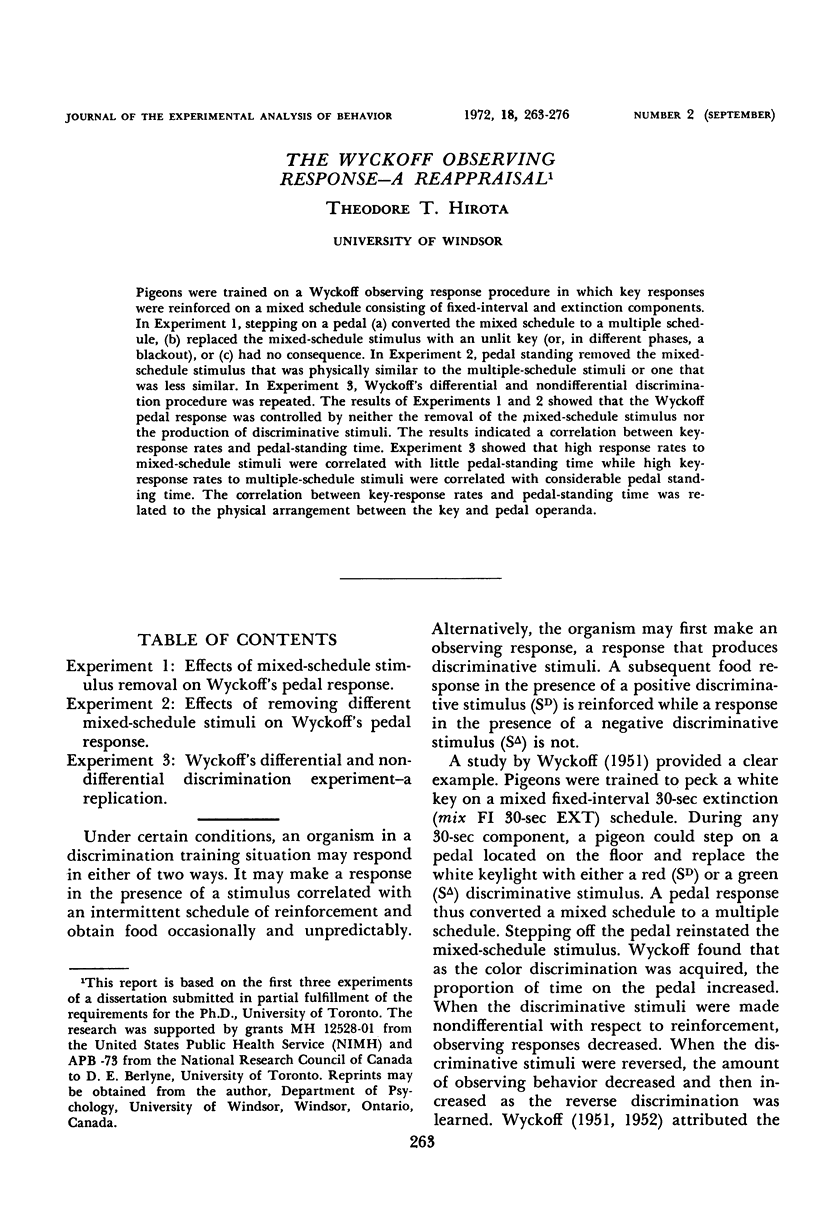
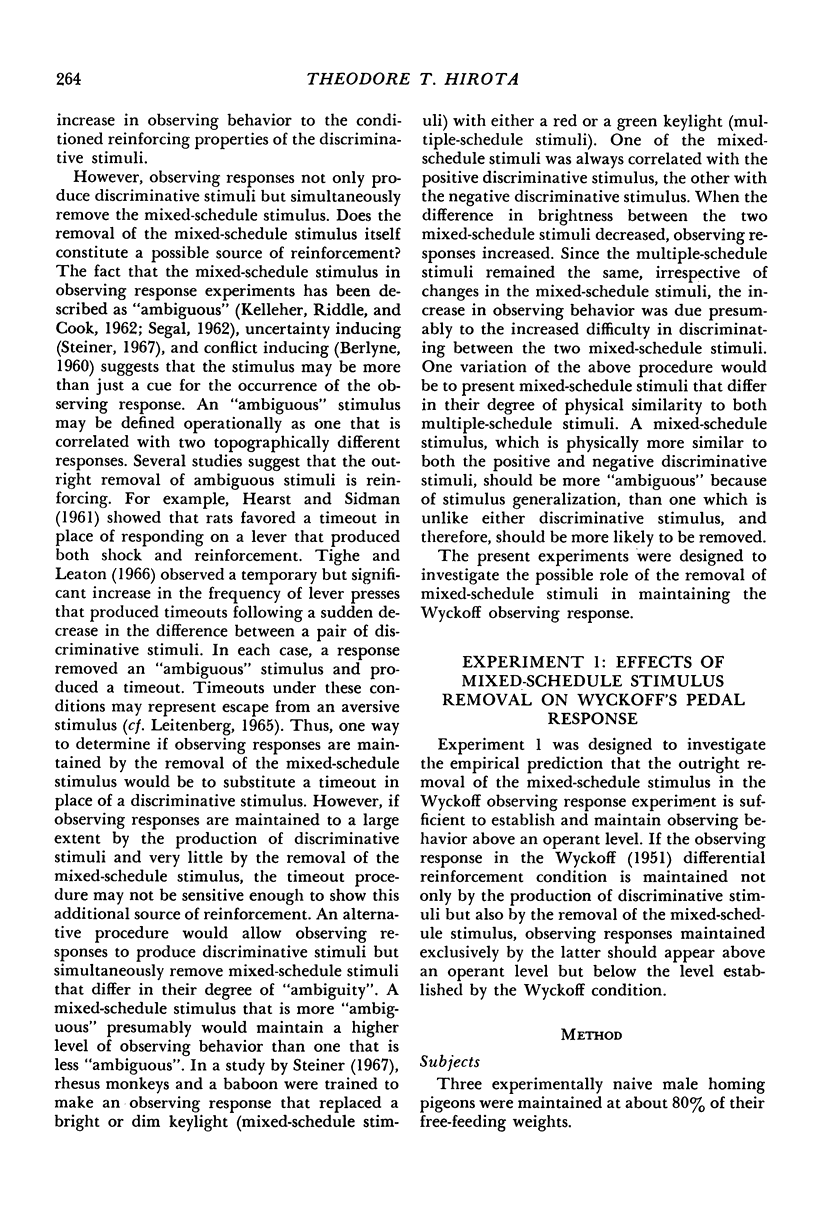
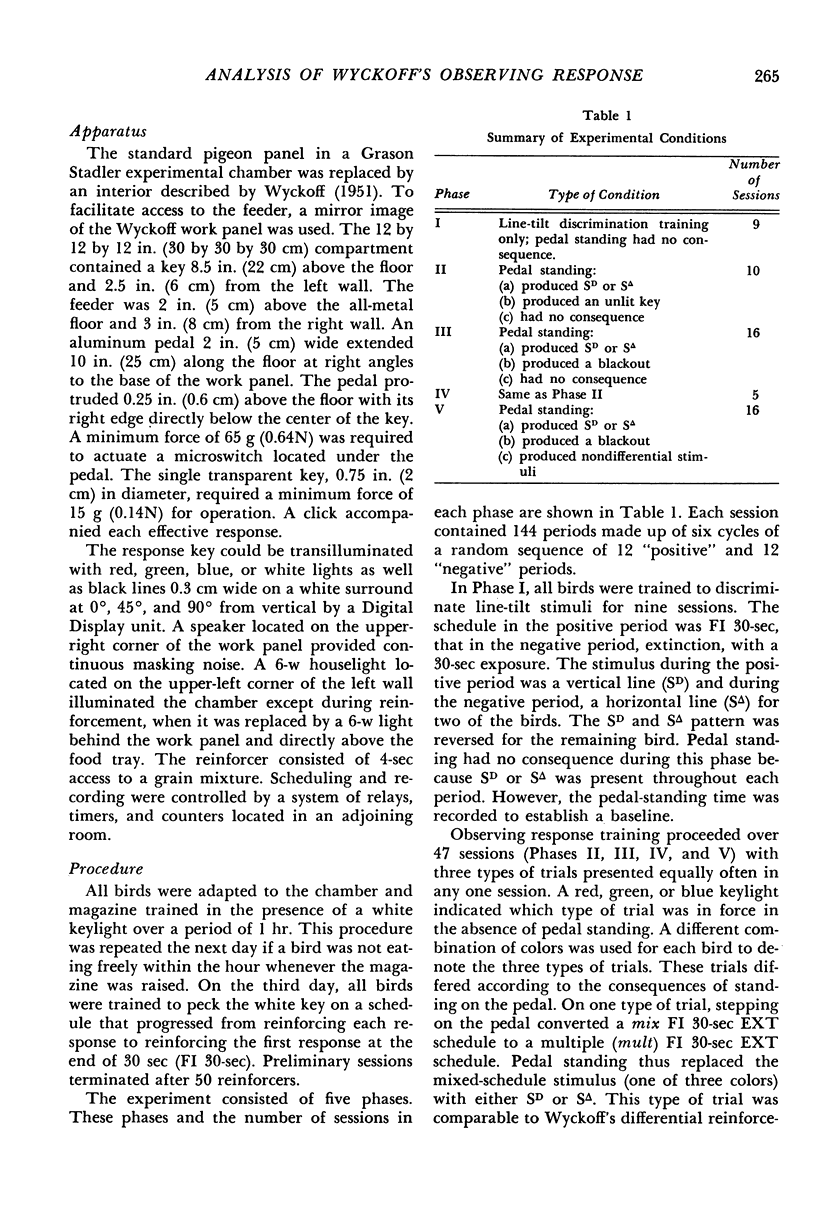
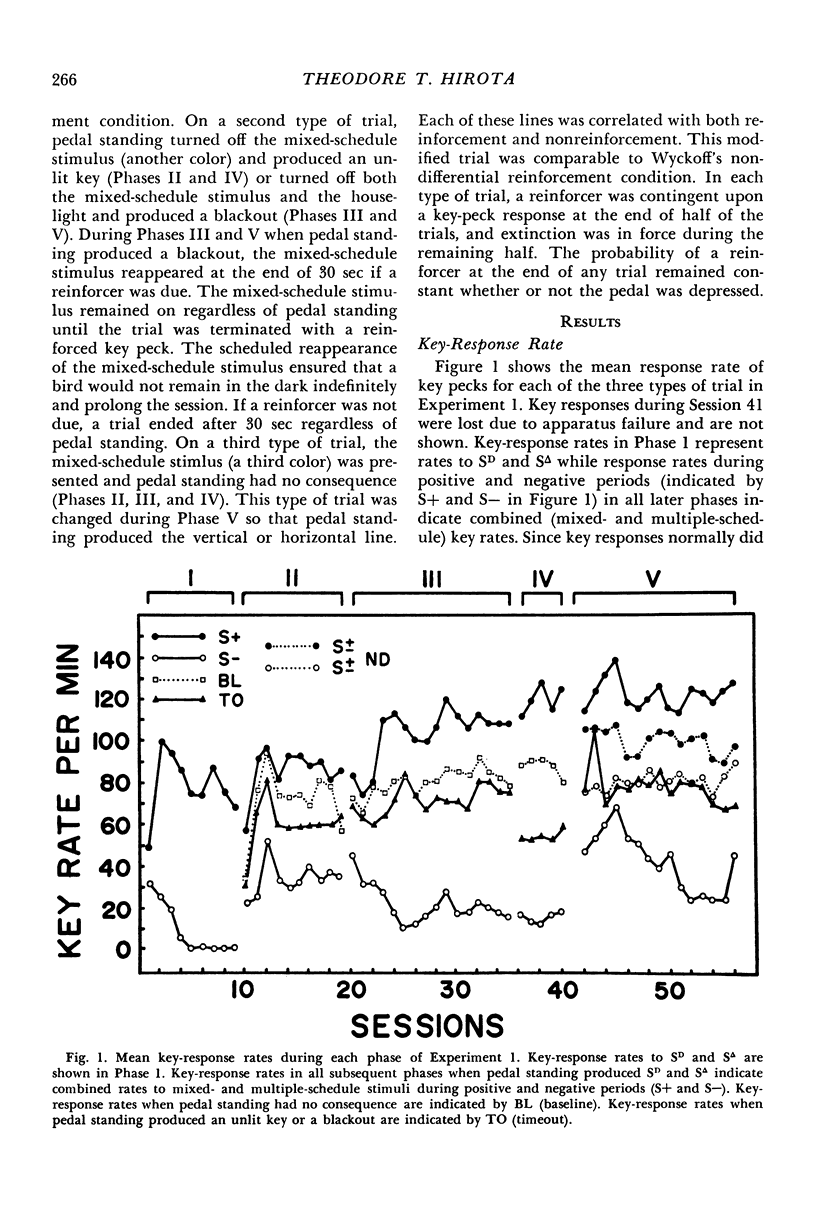
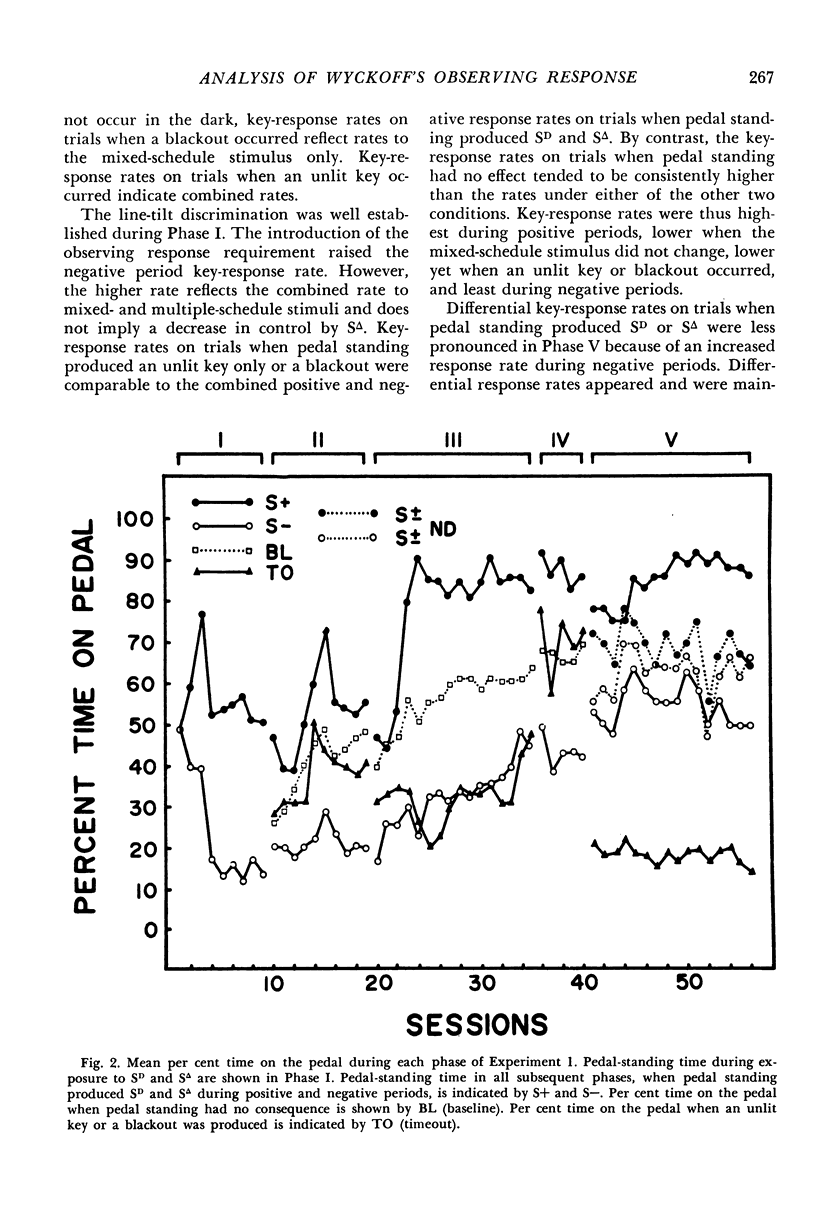
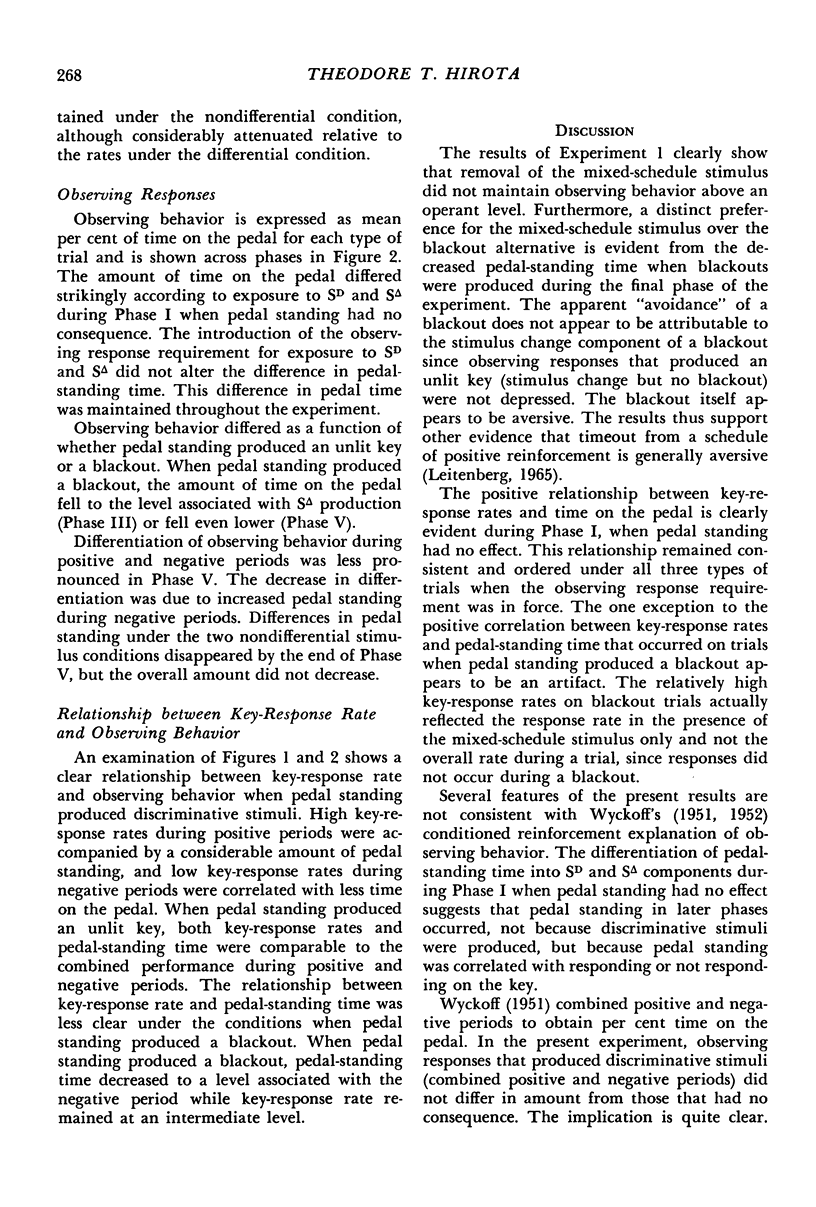
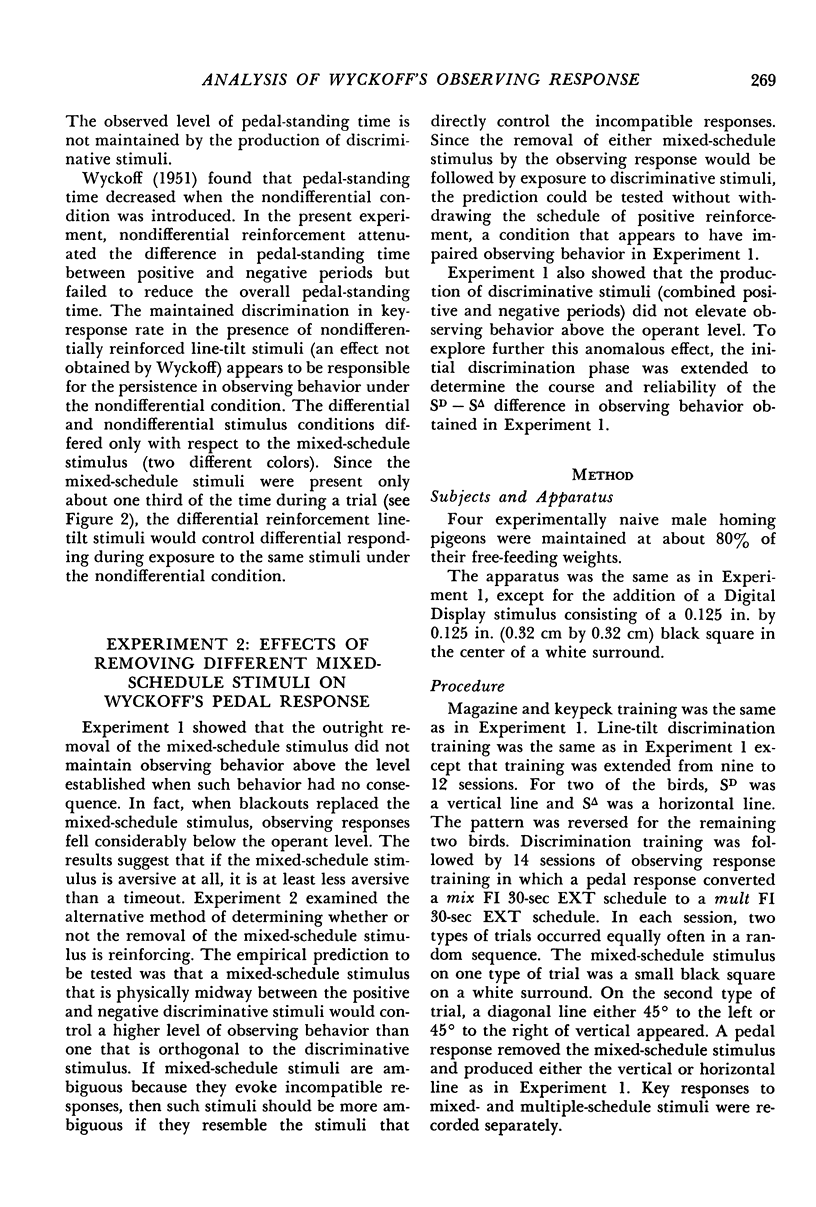
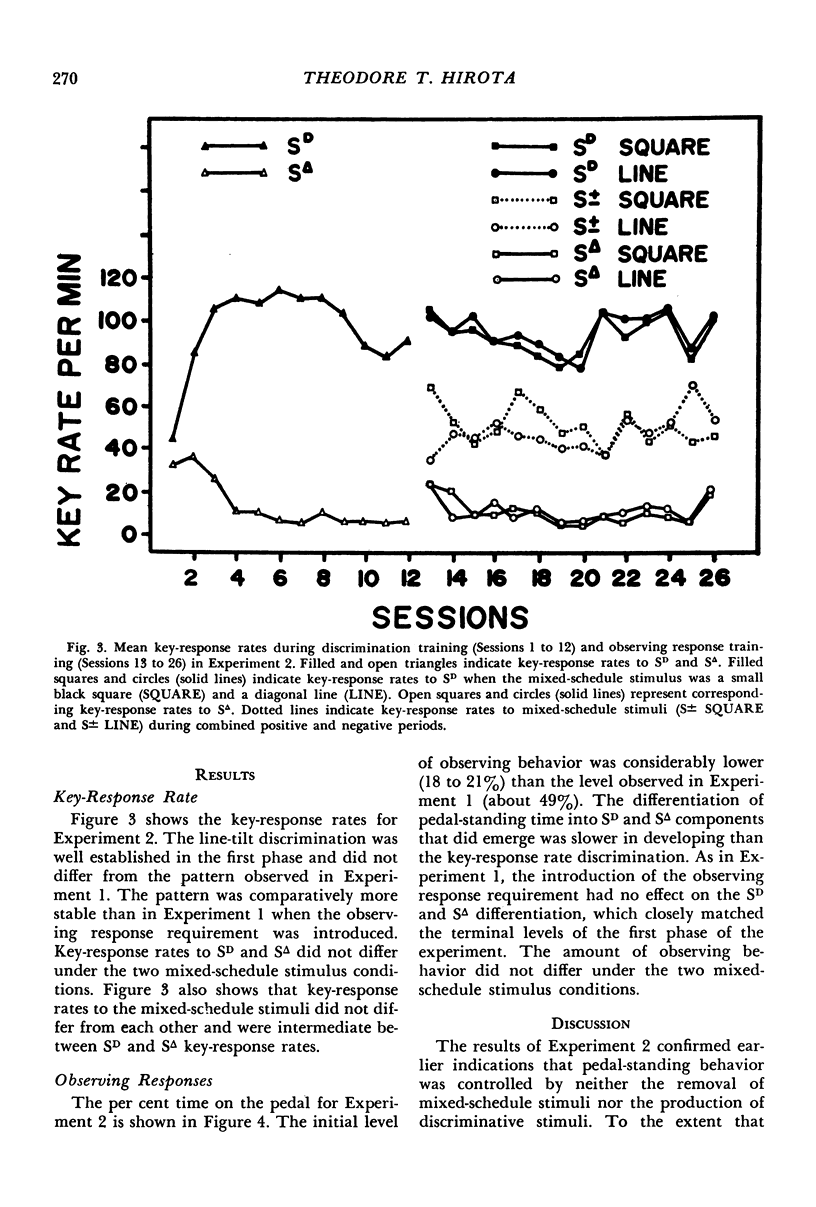
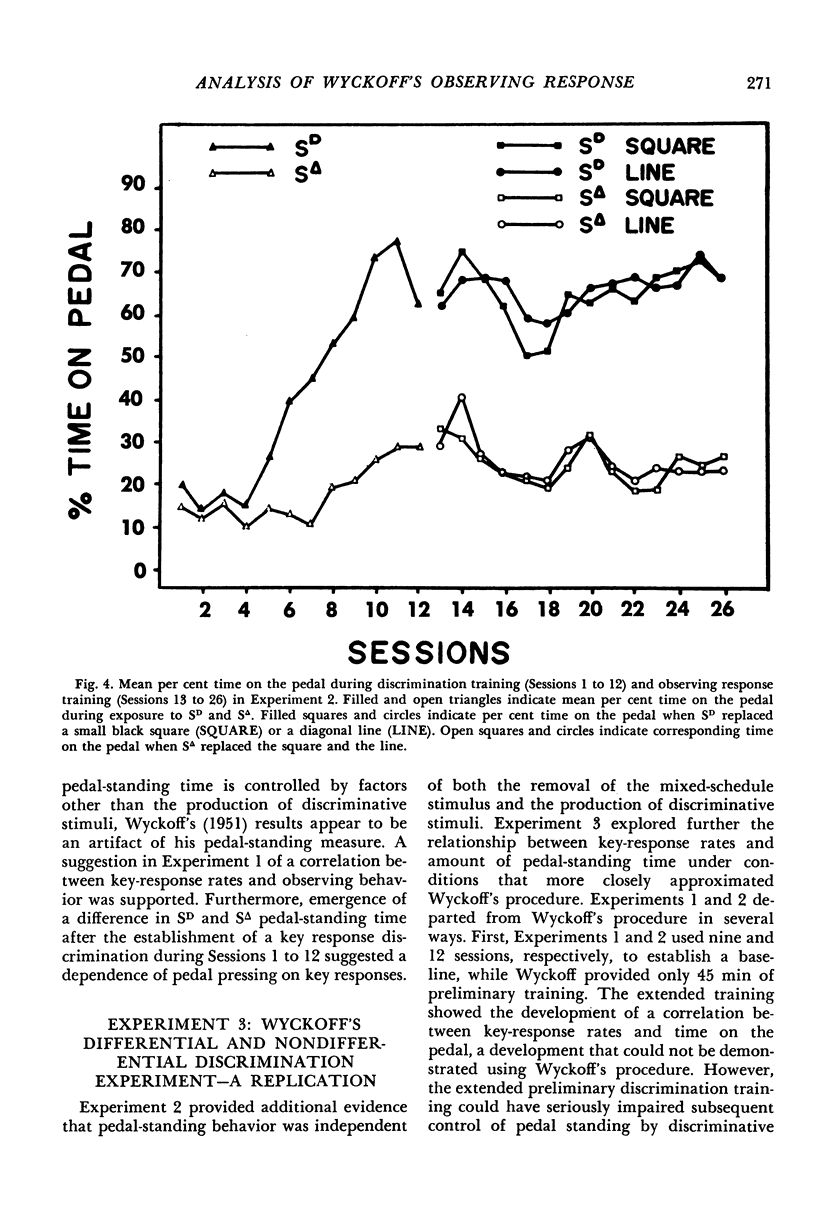
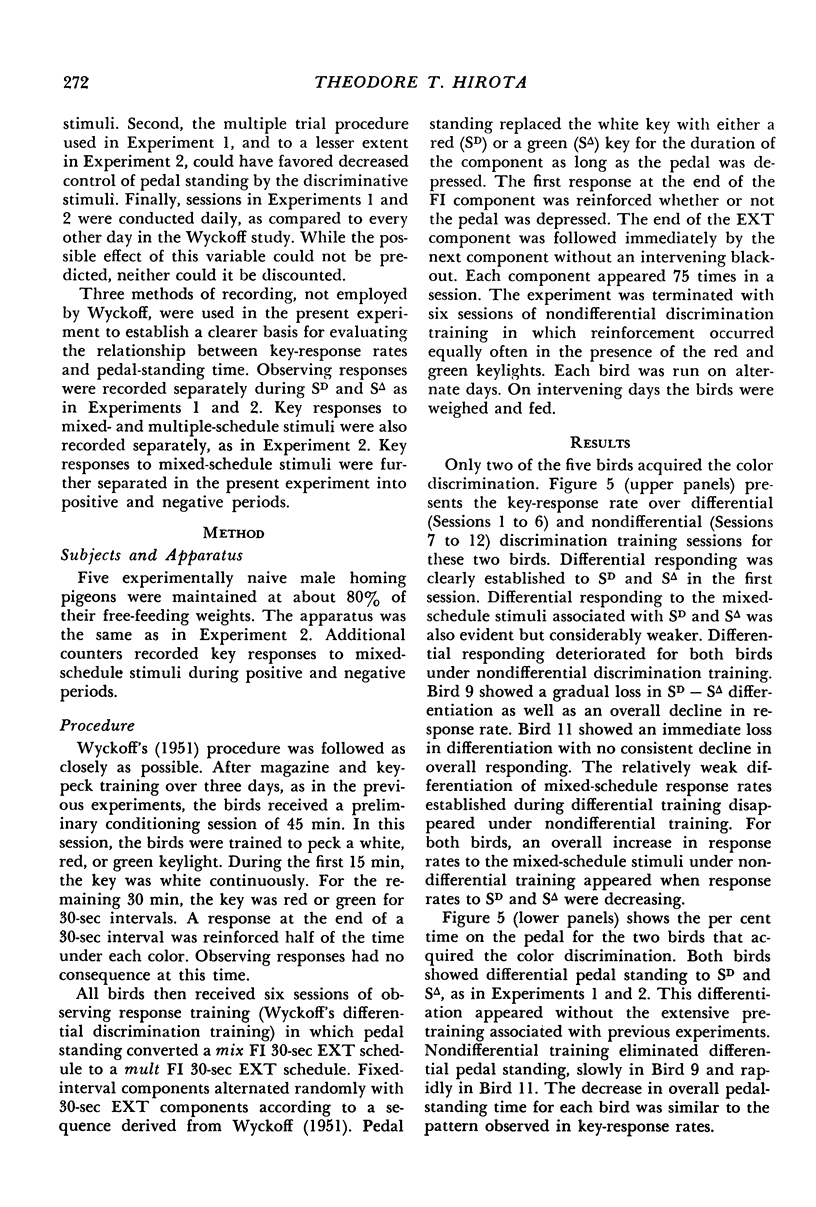
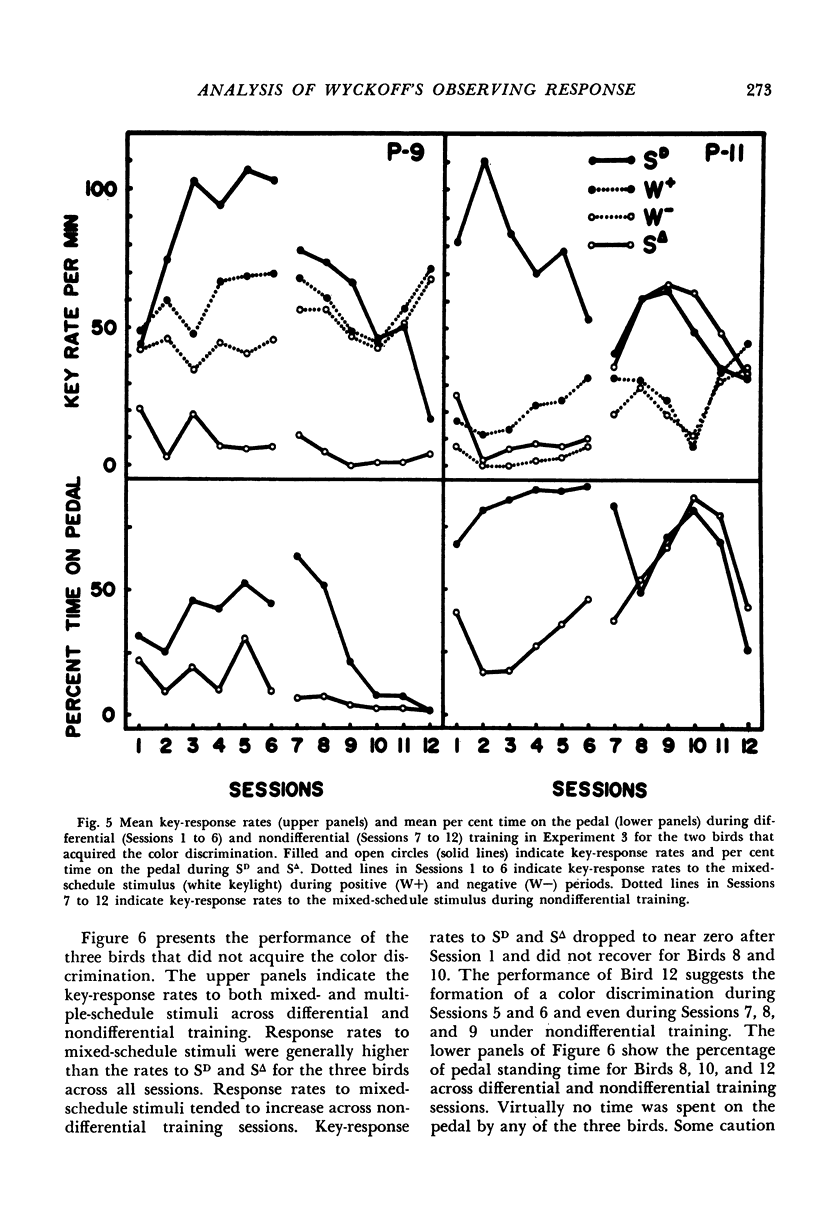
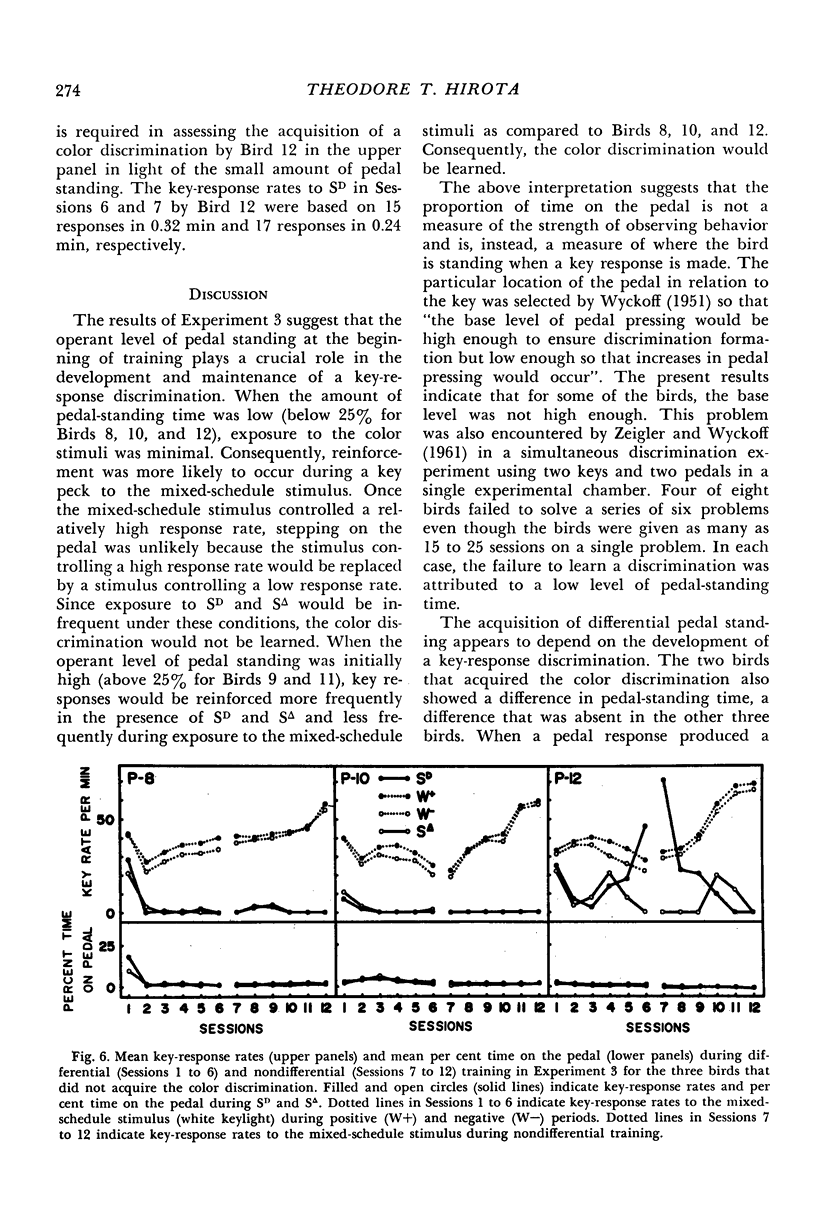
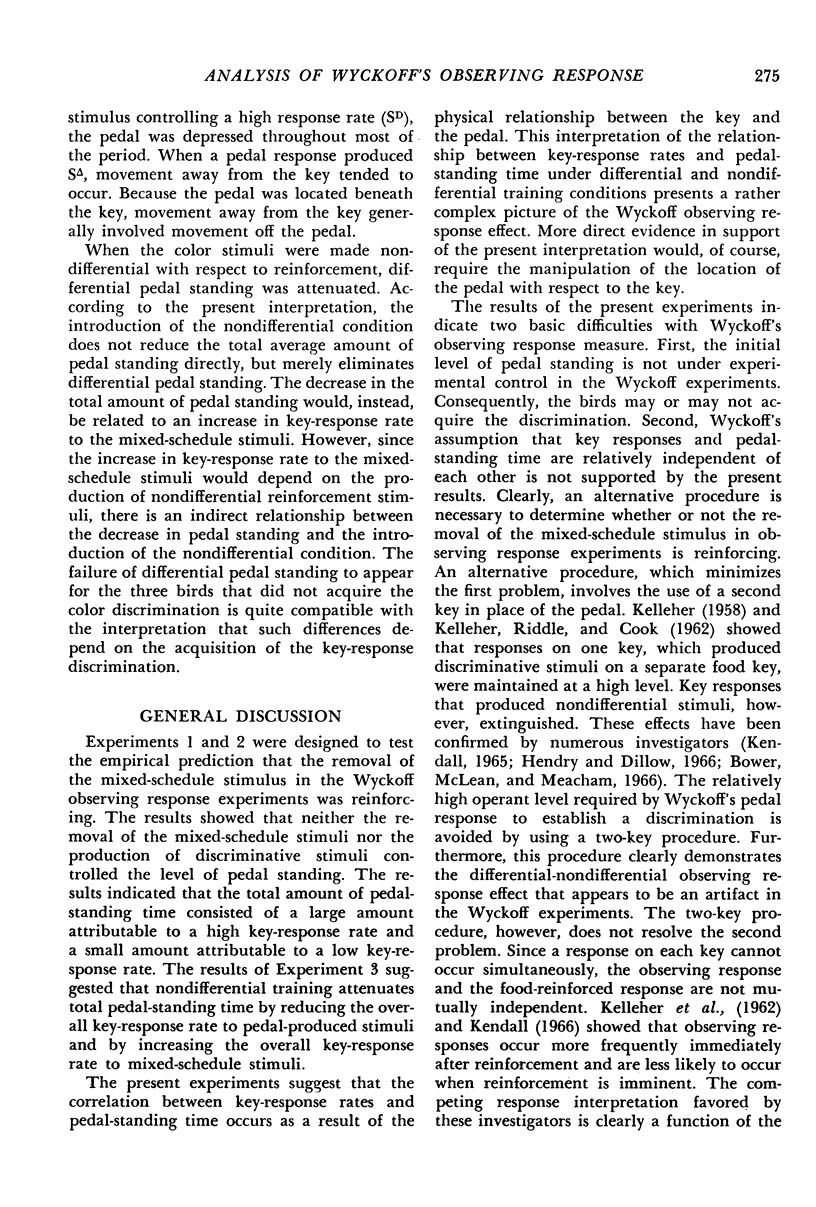
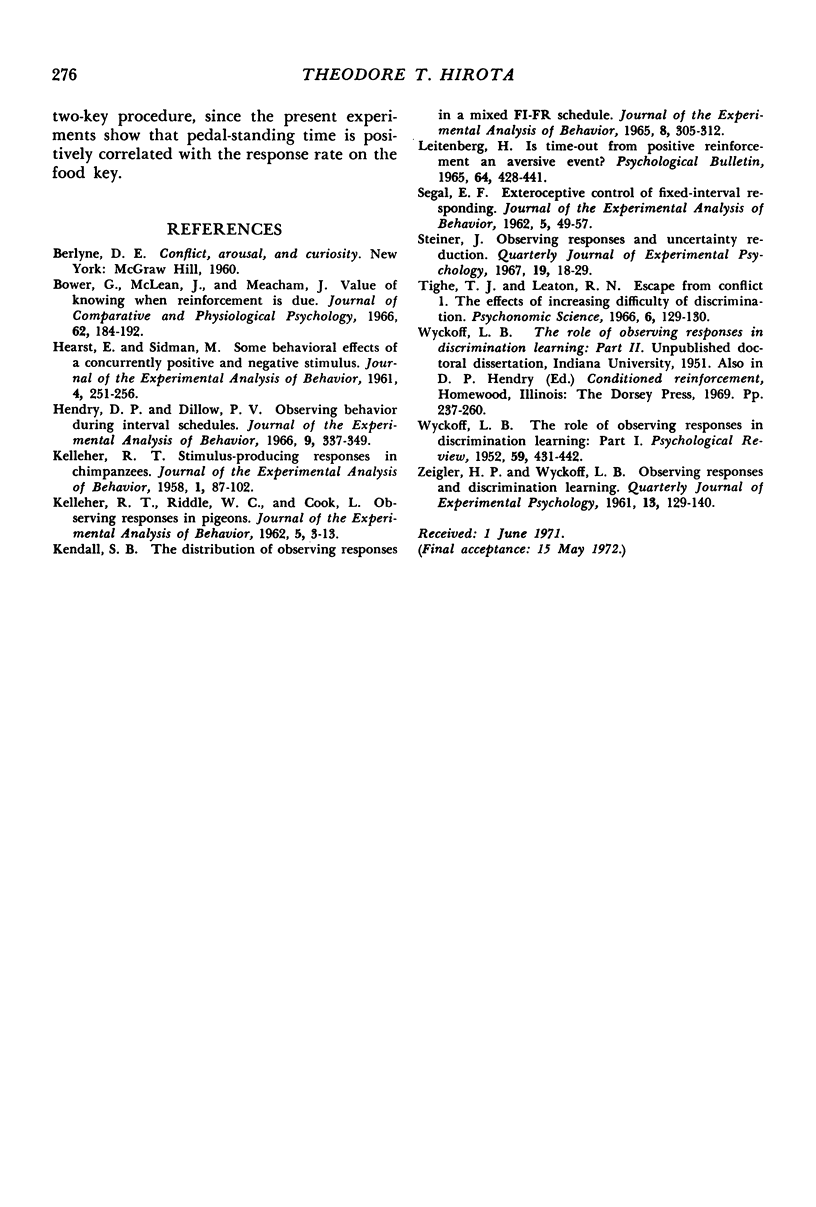
Selected References
These references are in PubMed. This may not be the complete list of references from this article.
- Bower G., McLean J., Meacham J. Value of knowing when reinforcement is due. J Comp Physiol Psychol. 1966 Oct;62(2):184–192. doi: 10.1037/h0023682. [DOI] [PubMed] [Google Scholar]
- HEARST E., SIDMAN M. Some behavioral effects of a concurrently positive and negative stimulus. J Exp Anal Behav. 1961 Jul;4:251–256. doi: 10.1901/jeab.1961.4-251. [DOI] [PMC free article] [PubMed] [Google Scholar]
- Hendry D. P., Dillow P. V. Observing behavior during interval schedules. J Exp Anal Behav. 1966 Jul;9(4):337–349. doi: 10.1901/jeab.1966.9-337. [DOI] [PMC free article] [PubMed] [Google Scholar]
- KELLEHER R. T., RIDDLE W. C., COOK L. Observing responses in pigeons. J Exp Anal Behav. 1962 Jan;5:3–13. doi: 10.1901/jeab.1962.5-3. [DOI] [PMC free article] [PubMed] [Google Scholar]
- KELLEHER R. T. Stimulus-producing responses in chimpanzees. J Exp Anal Behav. 1958 Jan;1:87–102. doi: 10.1901/jeab.1958.1-87. [DOI] [PMC free article] [PubMed] [Google Scholar]
- KENDALL S. B. THE DISTRIBUTION OF OBSERVING RESPONSES IN A MIXED FI-FR SCHEDULE. J Exp Anal Behav. 1965 Sep;8:305–312. doi: 10.1901/jeab.1965.8-305. [DOI] [PMC free article] [PubMed] [Google Scholar]
- Leitenberg H. Is time-out from positive reinforcement an aversive event? A review of the experimental evidence. Psychol Bull. 1965 Dec;64(6):428–441. doi: 10.1037/h0022657. [DOI] [PubMed] [Google Scholar]
- Segal E. F. Exteroceptive control of fixed-interval responding. J Exp Anal Behav. 1962 Jan;5(1):49–57. doi: 10.1901/jeab.1962.5-49. [DOI] [PMC free article] [PubMed] [Google Scholar]
- Steiner J. Observing responses and uncertainty reduction. Q J Exp Psychol. 1967 Feb;19(1):18–29. doi: 10.1080/14640746708400063. [DOI] [PubMed] [Google Scholar]
- WYCKOFF L. B., Jr The role of observing responses in discrimination learning. Psychol Rev. 1952 Nov;59(6):431–442. doi: 10.1037/h0053932. [DOI] [PubMed] [Google Scholar]


